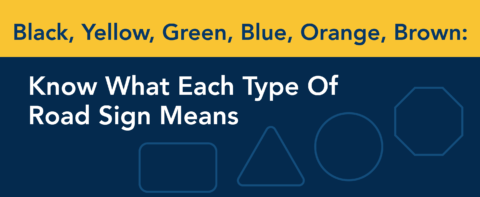
Road signs come in many different shapes and colors, and keeping track of each color can be difficult. But studying your traffic signs and knowing what each type of road sign means could be the difference between reaching your destination safely or not. Here are some tips to improve your knowledge of traffic sign colors:
Black and white: Posted regulations (i.e., speed limits) are seen on black and white road signs. Regulatory signs tell you what you can and can’t do on the road. Some signs show maximum and minimum speed limits for all types of vehicles on freeways and limited access highways. In construction and maintenance zones, posted speeds legally reduce the speed limit on that portion of the highway. Unless necessary for safety, driving slower than the minimum is illegal.
Yellow: Yellow signifies WARNING. Yellow traffic signs stand for slowing down, driving with caution, or a general warning. It may be yellow, or yellow-green with black wording or symbols. This sign warns you about hazards or possible hazards on or near the roadway.
Green: This color is used for guide signs. These signs tell you where you are, which way to go and the distance.
Blue: This color is also used for guide signs. These signs tell you about services along the roadway such as rest areas, hospitals, gas stations, and lodging.
Orange: You’ll see orange traffic signs anywhere there’s construction occurring. This color is used to alert you to possible dangers ahead due to construction and maintenance projects. Reduce your speed and scan for workers who may be directing traffic.
Brown: This color is used for parks and recreation signs.
Traffic signs serve an important purpose: to keep all drivers safe. Each color signifies a different action or reference, but each one is important in its own right. If you find yourself questioning what a certain colored road sign means, take some time to study. Find your state’s driver handbook online and refresh your memory about what each type of road sign means.
